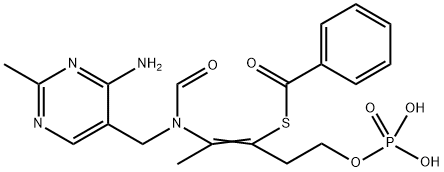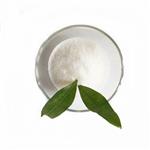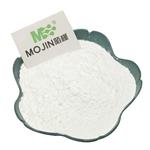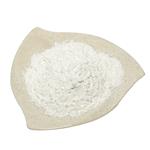S-Benzoylthiamine O-monophosphate has been used to determine its effect on ischemia and reperfusion in skeletal muscles of rat.
Vitamin B1 analog. Synthetic S-acyl derivative of Thiamine (T344185).
ChEBI: A thioester that is a synthetic analogue of thiamine obtained by acylative cleavage of the thiazole ring and O-phospohorylation.
28.6 g 84% phosphoric acid was heated to temperature about 270°C. After
cooling to 100°C 4 g thiamine hydrochloride (vitamin B1 hydrochloride) was
added and left at temperature 100°C before an isolation of HCl was ended.
After adding of an ice water and acetone, phosphate ester of vitamin B1 was
fallen. The precipitate was dissolved in 17 ml 1 N HCl and stood at ambient
temperature 7 days for a hydrolysis. Then a solution was with acetone diluted
and the mixture was cooled, whereupon vitamin B1 monophosphate
hydrochloride was isolated.
The solution of 4.3 parts vitamin B1 monophosphate hydrochloride in 16 parts
of water was diluted with 11 parts 15% NaOH, 2.1 parts benzoyl chloride was
dropwise added with stirring and cooling. The obtained mixture was
neutralized, evaporated in vacuum, acidified with concentrated HCl to pH 3.5-
4, whereupon a crude S-derivative of vitamin B1 monophosphate ester was
precipitated. The product was suspended in water, was bringing with NaOH to
pH 7 and was acidified to pH 4. 3.4 g refined S-benzoylthiamine Omonophosphate
was prepared; MP: 165°C (with decomposition).
S-Benzoylthiamine O-monophosphate (Benfotiamine) is an amphiphilic S-acyl thiamine derivative. It is a lipid-soluble vitamin. Benfotiamine?contains a thiazole ring. Benfotiamine has a greater bioavailability than thiamine.
S-Benzoylthiamine O-monophosphate (Benfotiamine) is a therapeutic agent. It helps in the prevention of diabetic complications such as, retinopathy, neuropathy and nephropathy. Benfotiamine inhibits the synthesis of glycation end products (AGEs) in diabetes. Benfotiamine is considered as a nutraceutical product for the prevention of diabetic neuropathy.



